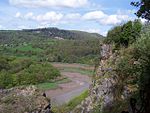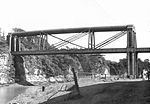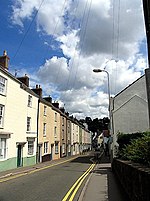Church Cottage, Tutshill
Grade II listed houses in GloucestershireJ. K. RowlingTidenham

Church Cottage in the village of Tutshill, Gloucestershire, England, is a Grade II listed building, thought to have been designed by the architect Henry Woodyer. It was the childhood home, between the ages of 9 and 18, of Joanne Rowling, author (as J. K. Rowling) of the Harry Potter series of fantasy books.
Excerpt from the Wikipedia article Church Cottage, Tutshill (License: CC BY-SA 3.0, Authors, Images).Church Cottage, Tutshill
B4228, Forest of Dean Tidenham
Geographical coordinates (GPS) Address Nearby Places Show on map
Geographical coordinates (GPS)
| Latitude | Longitude |
|---|---|
| N 51.654718 ° | E -2.665778 ° |
Address
B4228
NP16 7PT Forest of Dean, Tidenham
England, United Kingdom
Open on Google Maps








